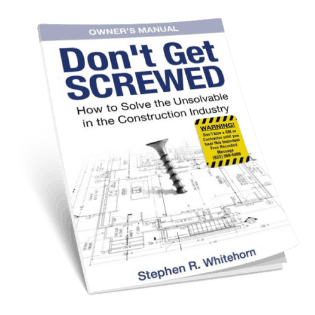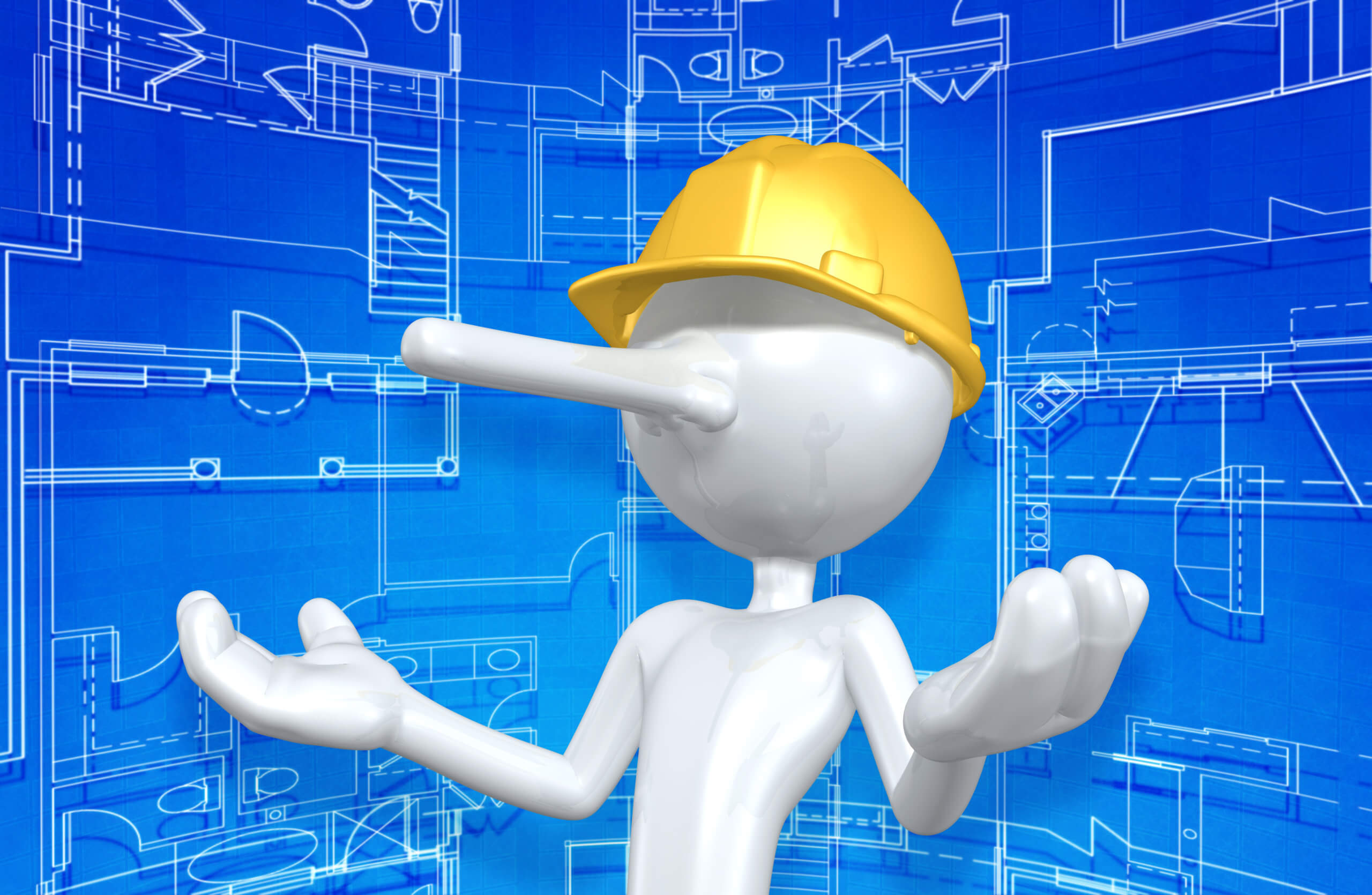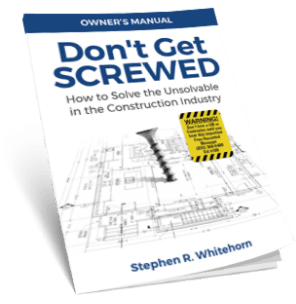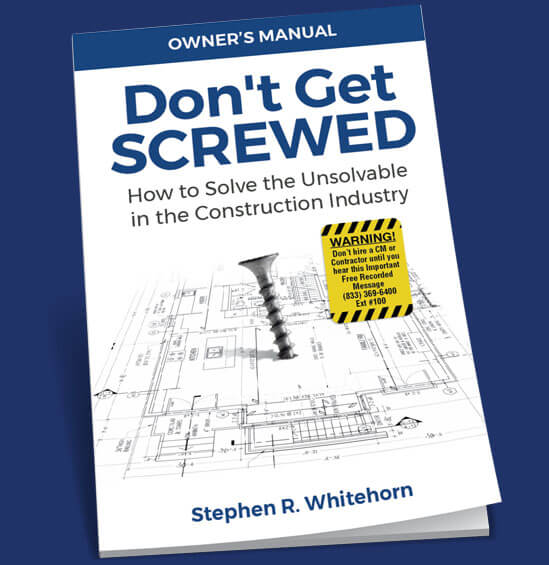In 1995, a government office building was designed in Pennsylvania. The final cost was $120 million, with 600 sheets of drawings and 2,000 Requests for Information (RFI) created.
Had the same project happened in the 1960s, there would have been 60 sheets of drawings and 200 RFI.
This trend is only getting worse.
Contractors expect figurative hand-holding but demand more from designers.
They want step-by-step instructions for how to build, much like a Paint-by-Numbers piece. They put the burden on the A/E’s shoulders, shirking their own culpability and sticking designers with the blame.
They make it difficult for A/Es to monitor work and track progress. They destroy checks and balances, and often fly under the radar, doing as they please.
This benefits the contractor at the expense of the A/E and the owner. Discover how to side-step the major pitfalls of large scale construction projectsFree e-book
DON’T GET SCREWED
Let me explain.
It’s Rarely a Fair Fight
Despite legal agreements at the start of a project, contractors can neglect sharing necessary information with A/Es (the “submittal schedule”) that would help ensure quality control and efficient planning.
Many of my A/E clients are lucky if they receive a submittal schedule 20% of the time, and even when they do, the contractor rarely sticks to it.
Contractors tend to view plans as a nuisance. By failing to supply A/Es needed information, any influence they should have over a project is all but nonexistent.
From the A/E’s standpoint, this creates chaos and undue stress while, to the contractor’s advantage, they can effectively hold the designer (and the owner, therefore) hostage with impunity.
Level the Playing Field
It is the sole purpose of A/Es to protect the owner on a construction project.
This is often overlooked by the owner, who’s then unable to take full advantage of the powerful allies they have to help them through the construction process.
A/Es exist to oversee quality control, while keeping costs to a minimum.
Their goals are the same as the owner’s: on time, on budget, seamless execution, and high quality work.
It’s their reputation on the line, and more importantly, it’s their passion.
The more involvement A/Es have in the process, the better off everyone in a construction project will be.
Yet, contractors have made sure they have as little involvement as possible.
We Need Change, and We Need It Yesterday
To owners undertaking a massive project, the design team is the best protection, and the most effective means for quality control.
Yet sadly, A/Es can find themselves with their hands tied, leaving the owner at the mercy of the contractor’s whims.
Bottom line: contractors have too much power, too much influence, and their “wheels” are always the squeakiest, opening the door to potential litigation against the designer.
They take advantage where they can, making it extremely difficult for designers to do their jobs.
This means that your greatest ally on a construction project can’t do much, if anything, to help you.
They can’t carry out the system that’s supposed to protect the individuals and institutions for whom the contractor works.
Quality and Ethics – the Obvious Solution
I’ve worked with design teams, architects and engineers for nearly 30 years. I have seen them get screwed. I’ve seen owners get screwed.
It’s not fair, and I don’t have the temperament or motivation to allow that to keep happening to innocent people.
There are other companies and organizations that provide a similar service to what we do, but they do not have the decades of experience that we do defending innocent professionals or victimized parties.
Our clients are bright, creative and, above all else, ethical.
I am tired of seeing them get taken advantage of, sued, screwed. It’s nonsense and it’s been going on for too many years without accountability.
Our culture – our mission – is about quality, ethics, and getting results for you.
And that starts by stripping contractors of their power and giving your allies on the project what they need to protect you.
If you would like more information about the Risk Free Construction Solution™ download our free book. [Link to book]






